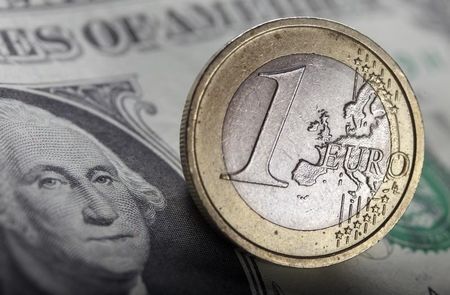Forex
EUR/USD forecast for 2024: UBS presents 3 scenarios that could lead to a decline

The euro (EUR) has remained in a narrow trading range against the US dollar (USD) for much of 2023, with UBS analysts predicting that this trend may persist into the entire 2024.
According to UBS, a combination of political, economic, and market dynamics makes forecasting the exchange rate particularly challenging. The key factors influencing this outlook include the outcomes of the French elections, the UK’s economic policies under its new administration, and upcoming US economic data releases.
Impact of French Elections
The recent French elections have had a significant impact on the EUR/USD outlook. The elections resulted in a hung parliament, with President Emmanuel Macron’s centrist Ensemble group performing better than expected.
The far-right National Rally (RN) party suffered a significant defeat, coming in third behind the left-wing New Ecologic and Social People’s Union (NUPES) coalition and Macron’s centrists.
UBS analysts noted that the election results remove the immediate risk of a conflict between the next French government and the European Union. With RN’s radical proposals off the table, the likelihood of EUR volatility driven by French political uncertainty has diminished.
However, the formation of the new government and its policy directions remain unclear, which could still influence the euro’s performance in the medium term.
Despite the election results being less disruptive than feared, UBS maintains its longer-term target for EUR/USD at 1.0500. Analysts argue that while the French political outcomes are not the worst-case scenario, they are not particularly favorable for the euro either.
Macron’s focus on domestic politics might limit his ability to drive further EU integration, which could weigh on the euro.
Scenarios for EUR/USD Decline
UBS outlines three scenarios that could lead to a more significant decline in EUR/USD than currently projected.
In the first case, UBS said that if the new French government, dominated by the left, actively works to reverse key reforms such as the pension age increase, it could create market uncertainty and pressure the euro.
Secondly, a stalemate in the French government could generate a sense of instability, affecting investor confidence and the euro.
Last but not least, upcoming French economic data, including flash PMI, business confidence, and consumer confidence, could show signs of weakness due to political uncertainty. Poor economic performance would make it harder for France to meet budget targets, negatively impacting the euro, said UBS.
Despite the challenges, UBS maintains its EUR/USD target at 1.0500, with the potential for deviations depending on future political and economic developments.
Meanwhile, a potential shift in the Democratic ticket is expected to keep markets abuzz, potentially leading to increased volatility.
However, with no definitive deadline or timeline for changes other than the Democratic Party Convention from August 19-22, pricing in risk premia related to this issue remains difficult.
UBS analysts view the upcoming election as a catalyst for increased implied and realized volatility in the latter half of the year.

 Forex3 years ago
Forex3 years agoForex Today: the dollar is gaining strength amid gloomy sentiment at the start of the Fed’s week

 Forex3 years ago
Forex3 years agoUnbiased review of Pocket Option broker

 Forex3 years ago
Forex3 years agoDollar to pound sterling exchange rate today: Pound plummeted to its lowest since 1985

 Forex3 years ago
Forex3 years agoHow is the Australian dollar doing today?

 Cryptocurrency3 years ago
Cryptocurrency3 years agoWhat happened in the crypto market – current events today

 World3 years ago
World3 years agoWhy are modern video games an art form?

 Commodities3 years ago
Commodities3 years agoCopper continues to fall in price on expectations of lower demand in China

 Economy3 years ago
Economy3 years agoCrude oil tankers double in price due to EU anti-Russian sanctions


























